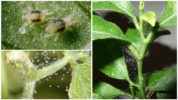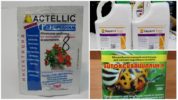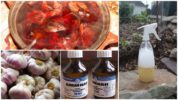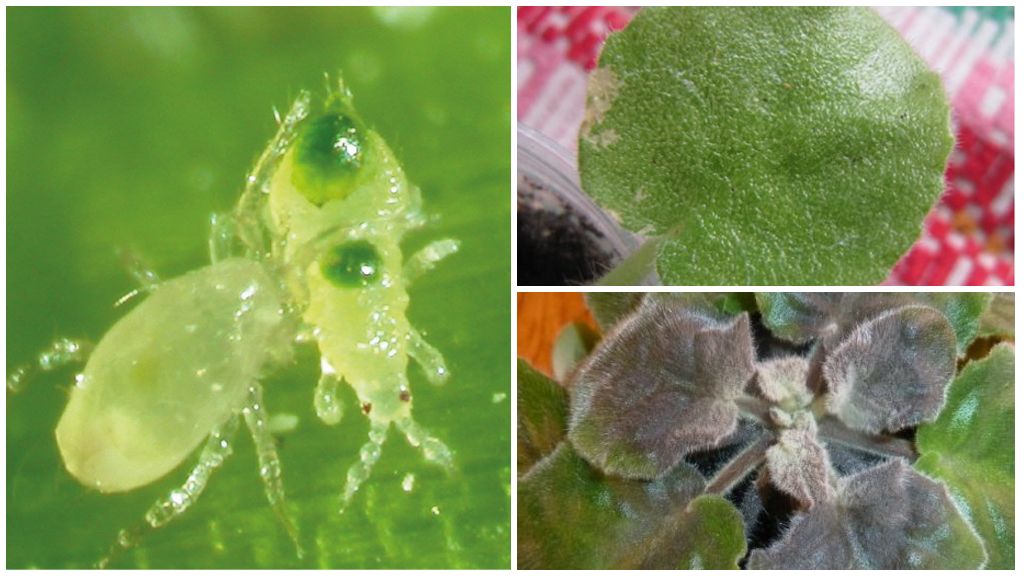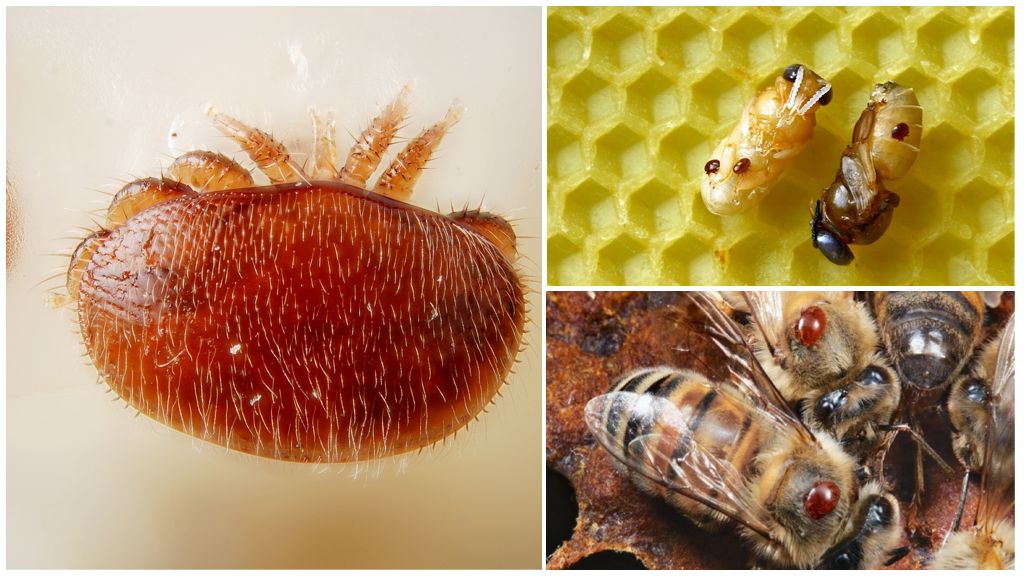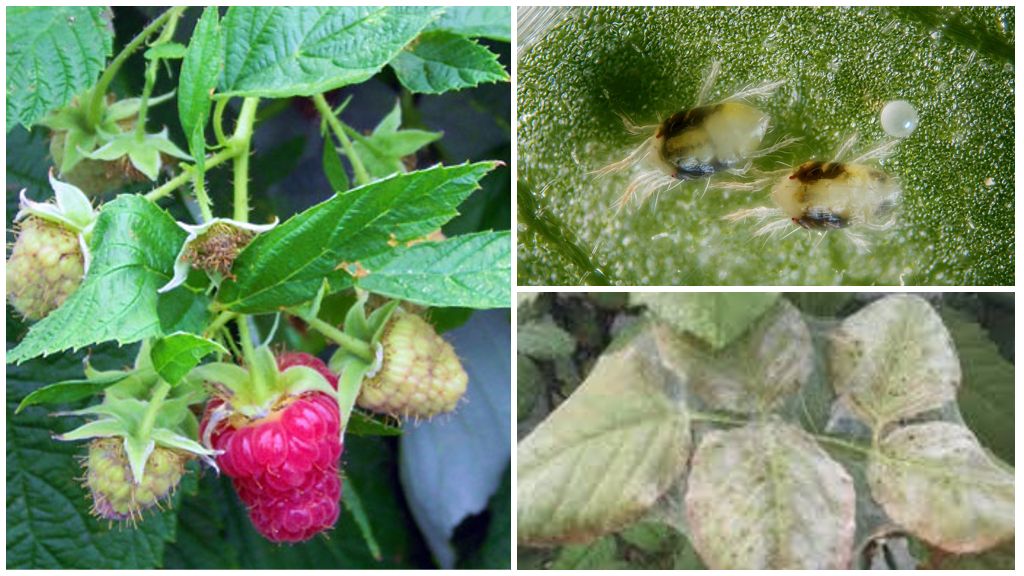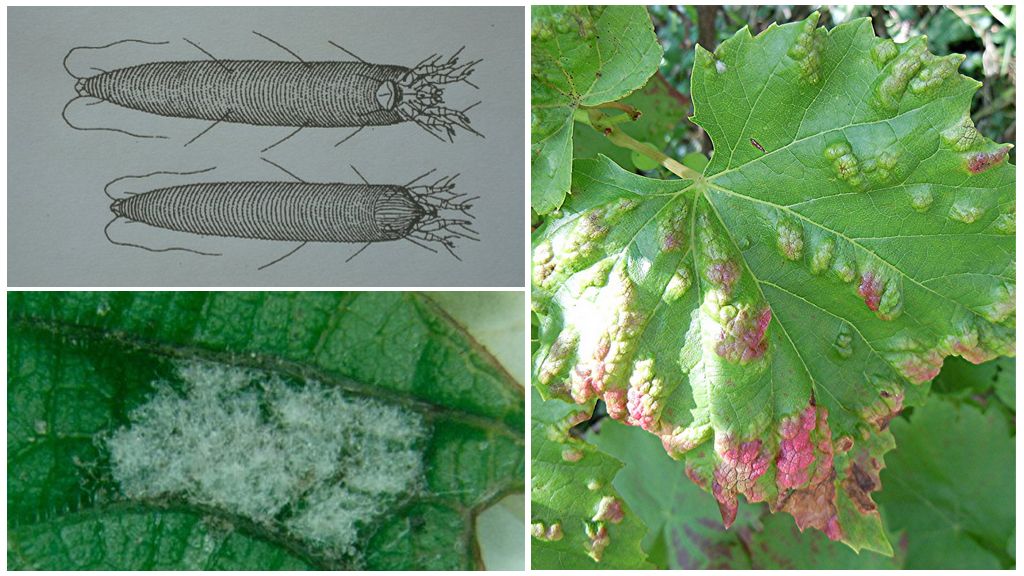- Spider mite on indoor plants
- Spider mite control
- Folk remedies in the fight against ticks
The spider mite, which often affects indoor plants, entangling all leaves, is a real disaster for gardeners. Such tiny insects settle in large colonies and can lead to the death of the plant. About how to deal with the spider mite on indoor plants, it is necessary to tell in detail.
Pest Description
Spider mite It belongs to the class of arachnids and to the type of arthropods, which is associated with the special structure of its body. Due to the small size of 0.5-1 mm, as can be seen in the photo, the spider mite on indoor plants is almost invisible to the human eye. It has an oval body painted in various masking colors: gray, brown, brown, green. The main diet of adults and their larvae consists of plant juices, which they suck from the green parts of plants.
The name of the tick did not come from the ability to weave cobwebs, but because individuals secrete a special secret that hardens on the leaves in the form of threads. When there are many pests, a translucent web can entangle the entire plant.
Interesting!
Female ticks are able to lay several hundred eggs in a short time (less than a month), of which larvae appear within 3 days, which, under favorable conditions, quickly become adults.
What does a spider mite look like on indoor plants
You can notice the signs of the pest settlement on the flowers only by the appearance of the plant and the traces of the activity of insects. They have special jaws to pierce the surface. After settling on the plant, small dots appear after the punctures on the underside of the leaves, which begin to turn yellow, and the leaves themselves dry out and sprinkle. All this inhibits the normal development of a room flower, worsens photosynthesis, and as a result can lead to the death of a plant.
The main symptoms of the lesion:
- the appearance of traces of punctures, blanching, destruction and drying of leaves;
- a whitish coating on the surface, similar to dandruff, spots and streaks of silver - traces of molting and insect secretions.
In order to get rid of a tick on indoor flowers, it is necessary to start a fight with it in a timely manner, for which you should regularly inspect them with a magnifier in bright sunlight. If the first signs of pests are detected, action should be taken immediately.
Where does the tick come from in the house?
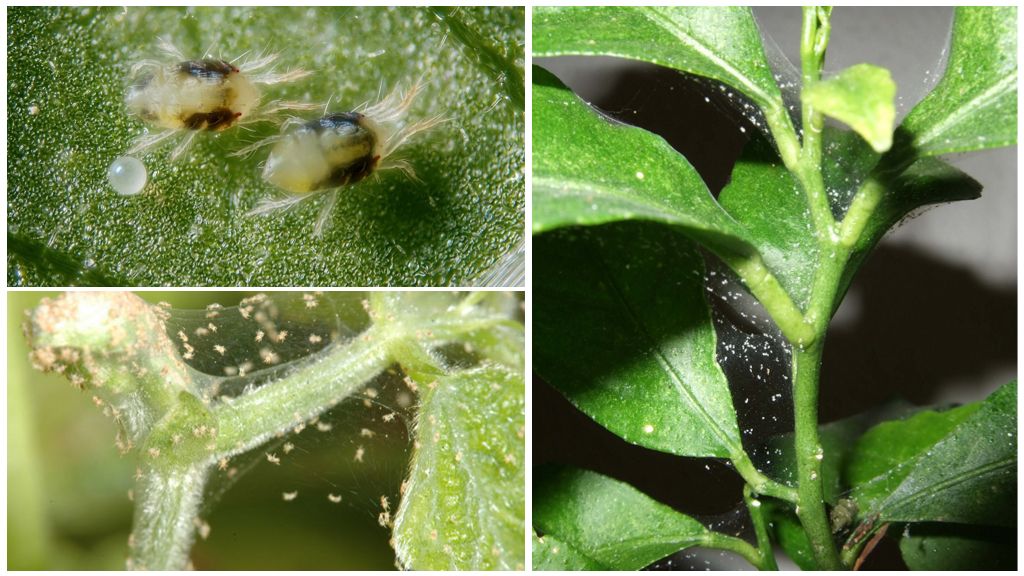
Pests can penetrate indoor plants in different ways:
- through plants purchased at the store;
- when using contaminated soil during planting;
- the wind can bring through the window from the trees;
- on man’s clothes or shoes.
Interesting!
Falling into unfavorable conditions for further development and even in the absence of nutrition, female spider mites can fall into diapause - a dormant stage in which they remain viable for 5 years.
They hibernate also with the onset of winter, with a decrease in temperature and a decrease in daylight hours to 17 hours. Females dig into the soil up to 20 cm deep, in the cracks in the window frame, in the floor, etc. This causes great difficulties and lengthens the terms of pest control.
Types of ticks and danger
Such small pests settle on domestic plants in accordance with their taste preferences. Some do not tolerate aloe, others are plants of the Gesneriaceae family, etc.
The number of tick species exceeds several thousand, the most common of which are:
- Common or white ticks - light spiders, the most dangerous and common, live on the back of the leaves and young shoots. With strong reproduction, they are able to crawl to neighboring plants. The first sign of their appearance on the flower: yellow spots and the thinnest web, which entangles green shoots and leaves.
- Red ticks - microscopic brightly colored insects affecting indoor orchids, roseslemon trees; belong to the most dangerous and rare.
- Cactus flat or bryobia - they affect exotic plants, leaving yellow dotted stripes on the green, the eggs are orange in color, and the masonry is arranged in a chain along leaf veins.
- False ticks are the smallest even among brethren, because of which they imperceptibly damage plants that are covered with cobwebs and quickly fade.
- Cyclamen - Settled in the soil, in tubers and on the leaves of plants, their colonies are similar in appearance to dust, which makes detection difficult.
Methods of struggle
To destroy the spider mite on indoor plants can be both folk methods and chemical means. In the first case, the plant will be dealt minimal damage, but the latter remove insects faster and more efficiently.
Chemical methods
As a means of combating spider mites, those that belong to the class of insectoacaricidal or acaricidal drugsbecause conventional insecticides do not deliver.
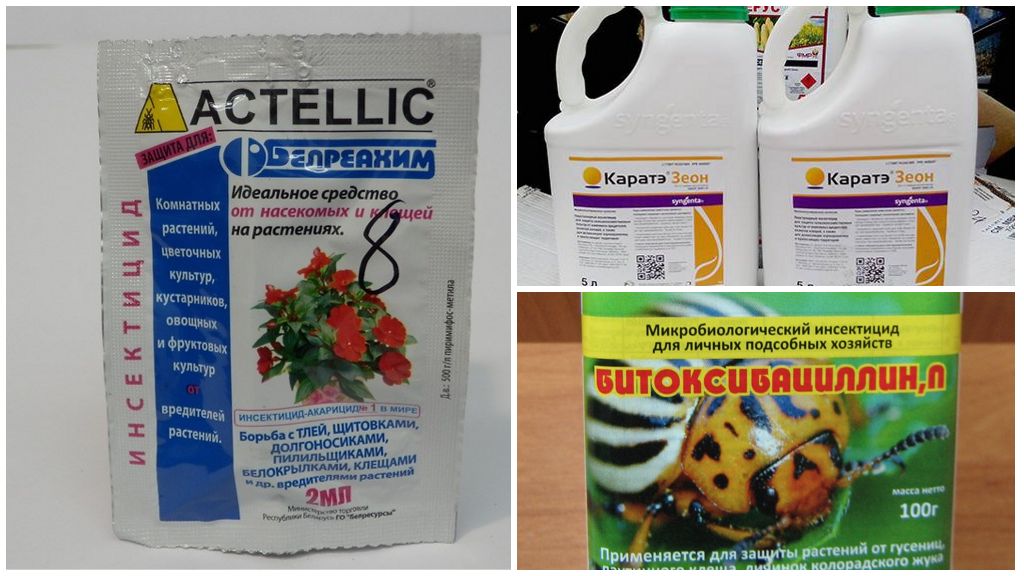
The most popular chemicals for spider mites on indoor plants are shown in the table below.
| Title | price, rub. | Class of the drug, action, use and features |
|---|---|---|
| Actellik (Canister 5 L) | 3000-3600 | Acaroinsecticide. Effective at all stages, pollination is done with an interval of 2 weeks, contains poison that is dangerous for pets, therefore it is recommended to process plants outdoors in protective clothing |
| Apollo, Nissoran | 1350-1450 | Hormonal acaricide. It has a sterilizing effect on adult flower ticks, eggs and larvae die |
| Bitoxibacillin (20-100 g) | 40-200 | Bio-insectoacaricide. It has intestinal effects on adult pests, safe for plants and mammals |
| Demitan (5 L) | 5000 | Acaricide, contains the substance phenazachine. Used for a single treatment, because it causes resistance (addiction). Toxicity is small but dangerous for fish |
| Karate, 5l | 1750 | Insectoacaricide. It is used at all stages of tick development, toxic to pets, fish and bees. |
| Neoron (ampoule 2 ml) | 50 | Contact action acaricide. The drug from a tick on plants, has a 4th hazard class |
| Omight (1 liter canister) | 2100 | Contact acaricide. Destroys nymphs and adult spider mites, 2nd class of danger |
| Sunmight (1 L canister) | 2500 | Contact action acaricide. Effective against insects at any stage, but can be addictive, therefore it is used once |
| Skelta (5 l canister) | 15500 | Insectoacaricide. It allows you to remove a tick from indoor flowers in 1 procedure, the death of larvae and ticks occurs within 5-7 days. |
| Talstar (canister 5 l) | from 3500 | Insectoacaricide, a group of pyrethroids. It acts on eggs, larvae and adult ticks, toxic to fish and bees |
| Flumayt (canister 1 l) | 3700 | Acaricide with hormonal effects. An effective tool that destroys eggs and larvae, sterilizes adults, treatment is done no more than 1 time per month due to high toxicity |
| Fitoverm (bottles of 4, 10, 50, 100 ml) | 15-300 | Bioinsecticide. Contains aversectins, which have a neurotoxic effect on insects, is low toxic |
| Fufanon (ampoules 2 ml, canister 1 l) | 20-1350 | Insectoacaricide. Effective for all stages, belongs to the 3rd hazard class |
| Envidor (1 L Canister) | 2100 | Insectoacaricide. The action is a violation of lipid metabolism in pests and their larvae, hazard class 3 |
Reviews
On my indoor flowers, I constantly carry out prophylaxis by washing the leaves with soap and water. With strong reproduction of ticks, I practice using Fitoverma with reprocessing after 7-10 days. So far, everything helps.
Julia, Minsk
Fight the spider mite I have to constantly, because there are a lot of trees around my house, and such pests are frequent guests in my flowers. No folk methods and biological preparations of parasites were taken. Until I tried Acoricidal Neoron, a strong and smelly remedy. Spraying had to be done on the balcony, but the mites were all poisoned.
Elena, Kursk
Folk remedies in the fight against ticks
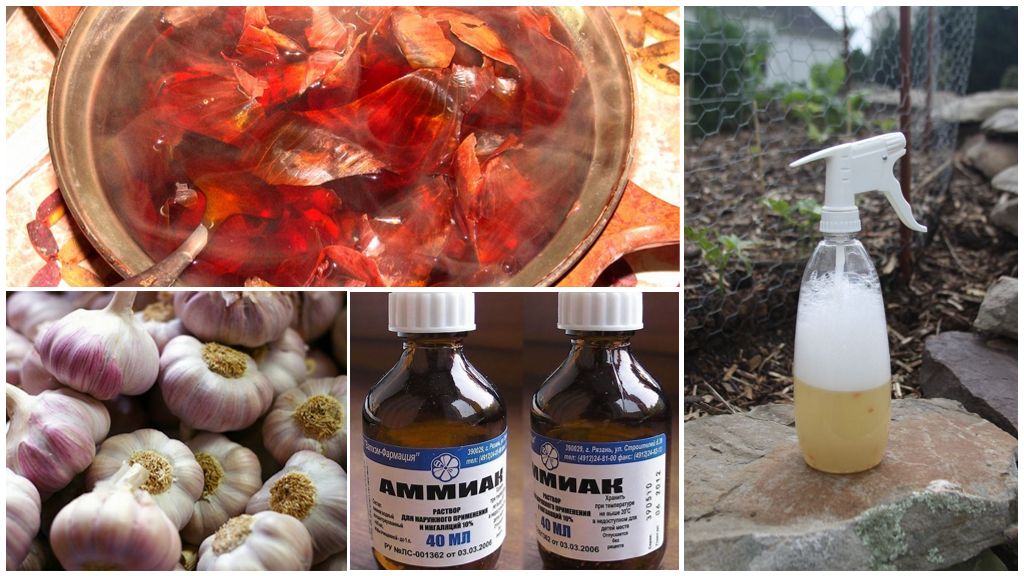
With a small lesion, it is possible to get rid of the spider mite on indoor plants by proven folk methods, which are more gentle and nontoxic compared to chemical poison.
Before starting treatment at home, it is necessary to thoroughly clean all the leaves using only clean water, because soap can clog pores on the surface. Similarly, do a wash for the pot and window sill.
Recipes of plant infusions for combating spider mites:
- 100 g of onion husks pour 5 l of water, insist for 5 days, strain and use for processing;
- Grind 2 heads of garlic, put in a jar and pour 1 liter of boiled water, close the lid and put in a darkened cool place for 5 days; the resulting infusion should be diluted in half with water and spray the plant from the spray gun;
- for plants with dense leaves, manual processing from a spider mite with ammonia is suitable: with a moistened cotton swab, wipe all the leaves;
- prepare a soap solution (green, tar or laundry soap), carefully treat the flower and pot, leaving foam for 2-4 hours, then rinse and cover the flower with polyethylene to maintain high humidity;
Tick Prevention
Many flower growers try to apply preventive measures to prevent insect attacks, which include:
- Carrying out regular inspection of indoor flowers.
- Maintaining optimal humidity (ticks do not like dry air).
- Periodic spraying of vegetation from a spray gun.
- Place purchased flowers in quarantine.
- When planting plants, use only steamed soil to destroy pests in hibernation.
To completely cure indoor flowers after an attack of spider mites, it may take a long time because of the survivability of the pest and its larvae.
